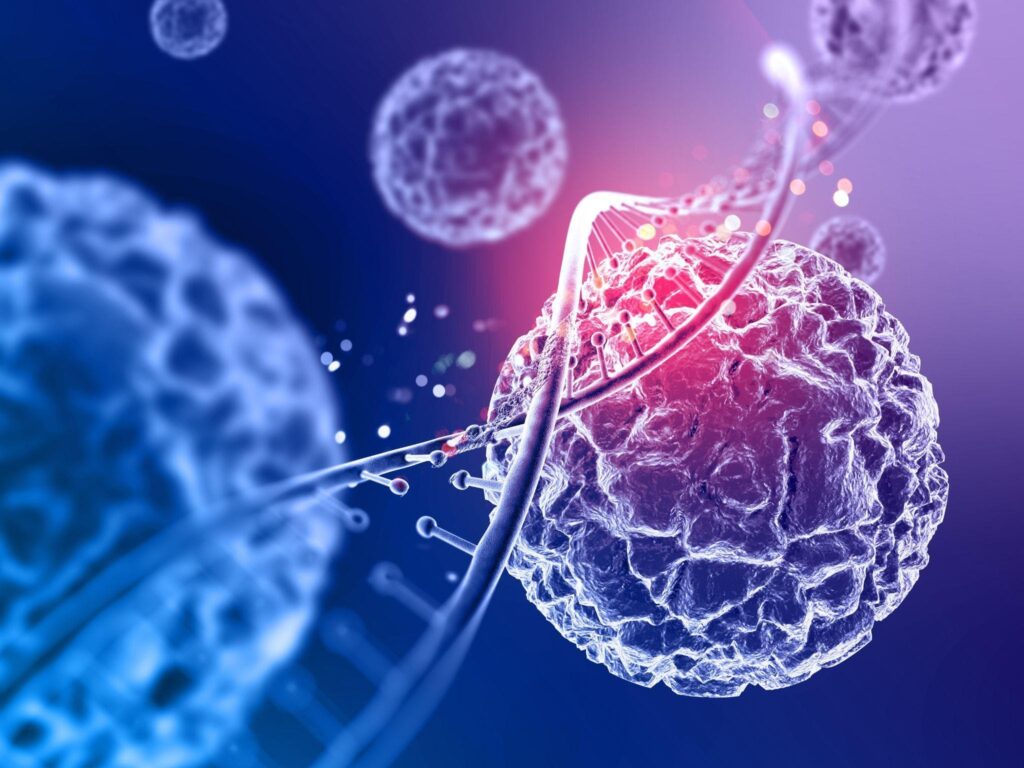We are currently living in a world that seems to be advancing by the second. Every other day, we come to hear about a marvelous invention, an impossible task turn possible again, and if nothing, then just the fact that things are not as complicated as they used to be in the past is sufficient enough to make us aware of how far we have come, thanks to research and technology combined.
In terms of medical science, researchers have been finally able to learn the secrets behind the occurrence of several unexplained diseases. Moreover, several incurable diseases that caused millions of deaths in the past now, have finally found a cure to treat the patient. Now, nothing seems as complex or questionable as it was in the past.

Genetic Engineering is yet another step of advancing in this new, modern world. Scientists have finally become able to see the link or the foundation of our existence – our DNA. This seemingly small strand of genetic material contains information that is worth every research that is being conducted to learn more about it.
Within the scope of genetic engineering, several different techniques and procedures have been introduced. These different procedures and techniques all revolve around finding more about how genes, DNA, RNA, and other related components could be manipulated or altered for further studies and research purposes. One popular technique being talked about greatly nowadays is that of gene or genome editing.
What Is Gene Editing?
In an attempt to learn more about DNA and to unravel the mystery of how it was able to hold and retain such extensive and complicated information at the same time, the phenomenon of gene editing was brought to light.
Gene editing is a technique that allows the DNA present in a genome to be manipulated or changed. This means that a scientist who is working on that specific genome can add, remove, and completely change the original sequence of the DNA to elicit a change in it.
This was an interesting and breakthrough discovery and the rest is history. After its discovery, several attempts were made at approaching the topic of genome editing from different angles and some are even currently underway to find out more about the potential of genome editing and how it could help in future research and applications.
Gene Editing and the CRISPR/CAS-9 Model
Gene editing was given an entirely new definition and direction when the CRISPR/CAS-9 technology was introduced to the world in 2012. The CRISPR/CAS-9 technique was a tool that let genes be manipulated under its effect.
Using a small RNA molecule as a guide, this technique uses its CAS-9 nuclease component to direct a specifically directed attack that causes a break in the double-stranded DNA molecule. This way, a gene is modified permanently and changes could then be applied to it for the purpose that it was manipulated in the first place.
CRISPR/CAS-9 has become one of the most used techniques for genome editing. It is easy-to-use, cheaper than the other techniques, and has a promising potential that has made studying the nature of gene editing on several different species ever since it has been discovered.
Does Gene Editing Work?
After several years of research, experimentation, and trial and error, it is safe to say that CRISPR/CAS-9 is approved for having an adverse range of applications throughout the field of biotechnology and genetic engineering.
From being used to treating diseases in an organism to imparting immunity to fight off infectious agents, from being used in agricultural lands to increase and promote the growth of a great-quality harvest to being inserted and studied for finding out more potential uses, CRISPR/CAS-9 has so far displayed a positive and promising impact throughout.
Therefore, the question of whether gene editing works or not is, simply put, out of the equation. It definitely works for all this research and revelations would never have been possible without that.
Evidence-based Discoveries That Took Place Due to Gene Editing
So far, gene editing has only displayed beneficial and health-inducing benefits for humans – in the treatment of cancer and other deadly diseases such as cystic fibrosis, sickle cell anemia, and hemophilia, where medical science has failed so far, gene editing seems to be the answer to that call that the scientists and doctors had made a long time ago, in search for a possible cure to these diseases. It has, similarly, also helped with the discovery of medicines for certain diseases.

These discoveries serve as a hope to the researchers that maybe other incurable conditions like mental health disorders, HIV infection, and chronic diseases like diabetes and cardiovascular conditions could also find a possible cure.
Given below is a summarized review of how gene editing has medically helped in finding, diagnosing, and treating certain previously incurable diseases:
Cancer Therapy:
Gene editing using CRISPR/CAS-9 has enabled researchers to replace the malignant transformations or changes within the cancerous DNA sequences with normal ones.
Cardiovascular Diseases:
CRISPR/CAS-9, once introduced inside the body, was seen to ablate the Major Histocompatibility Complex Class II (MHC II) using double gene knockout. This enabled the normal endothelial cells in the body to form vascular structures without activating the cytotoxic CD4+ T Cells. This could successfully be applied in the refinement of a heart transplant and ischemic heart conditions.
Neurodegenerative Diseases:
When gene editing research was carried out to study older brains, that were predisposed to get affected with accumulations of Alzheimer’s Disease (APOE4), the CRISPR/CAS-9 used helped changed this toxic accumulate into APOE2, a gene that was associated with a significantly lower risk for Alzheimer’s, thus significantly proving to be a helpful step towards reducing the burden of these diseases.
At the end of the day, it was only due to the remarkable feats of gene editing shown by CRISPR/CAS-9 that the contributions of both individual and collective genes towards causing a particular disease were understood. This led towards the further discovery of finding a cure to put these mutations to rest, once again, through genetic manipulation.
This makes one hopeful that very soon when proper research has been completed, these applications could be implemented on humans without any risk factors and would then show their brilliant potential.
References:
- Barman, A., Deb, B., & Chakraborty, S. (2020). A glance at genome editing with CRISPR-Cas9 technology. Current genetics, 66(3), 447–462. https://doi.org/10.1007/s00294-019-01040-3
- Rodríguez-Rodríguez, D. R., Ramírez-Solís, R., Garza-Elizondo, M. A., Garza-Rodríguez, M. L., & Barrera-Saldaña, H. A. (2019). Genome editing: A perspective on the application of CRISPR/Cas9 to study human diseases (Review). International journal of molecular medicine, 43(4), 1559–1574. https://doi.org/10.3892/ijmm.2019.4112
- Li, H., Yang, Y., Hong, W., Huang, M., Wu, M., & Zhao, X. (2020). Applications of genome editing technology in the targeted therapy of human diseases: mechanisms, advances and prospects. Signal transduction and targeted therapy, 5(1), 1. https://doi.org/10.1038/s41392-019-0089-y
- Meissner, T. B., Mandal, P. K., Ferreira, L. M., Rossi, D. J., & Cowan, C. A. (2014). Genome editing for human gene therapy. Methods in enzymology, 546, 273–295. https://doi.org/10.1016/B978-0-12-801185-0.00013-1
- Gaj, T., Sirk, S. J., Shui, S. L., & Liu, J. (2016). Genome-Editing Technologies: Principles and Applications. Cold Spring Harbor perspectives in biology, 8(12), a023754. https://doi.org/10.1101/cshperspect.a023754
